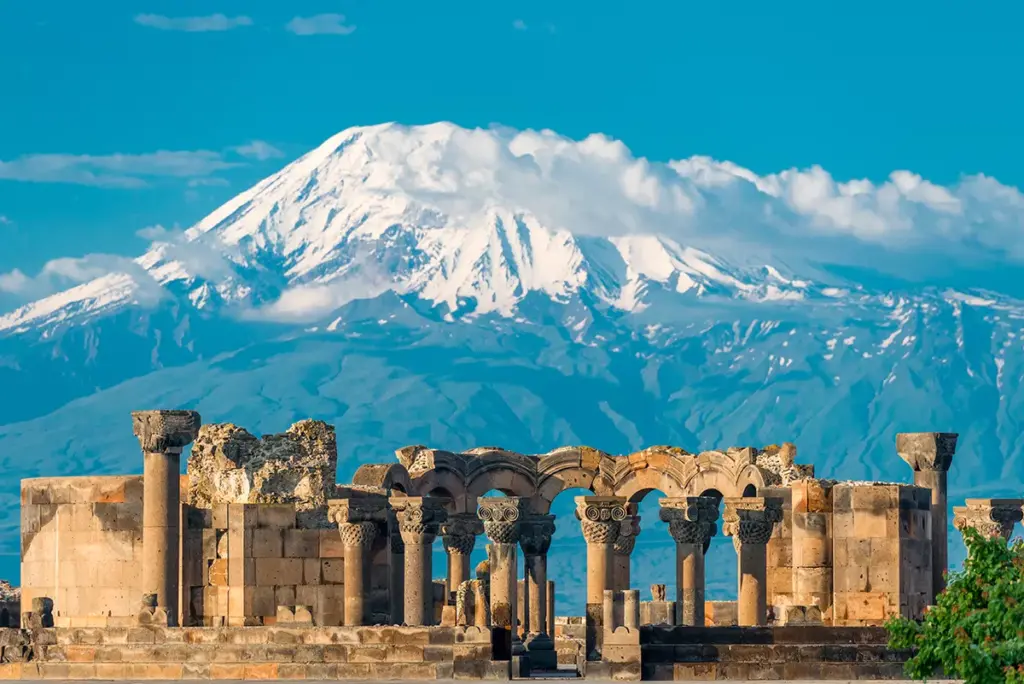
The World of Fine Wine has teamed up with Great British Chefs to find the best wine matches for a range of classic dishes. In this instalment, leading food and wine writer and WFW columnist, Joanna Simon, selects wines from the WFW tastings archive to pair with a contemporary take on Bolognese-stuffed marrow.
After scrutinizing the Great British Chefs’ recipe, Joanna came up with two suggestions to accentuate the mellow, comforting flavors of the recipe: An Etna Rosso, such as Nicosia Contrada Monte Gorna Etna Rosso DOC 2019, as featured in WFW81; and a fine, terroir-driven Rioja Crianza, such as Bodega Lanzaga–Telmo Rodríguez Las Beatas 2018.
Below, you’ll find a brief introduction to the recipe by Anna Tobias, as well as comprehensive tasting notes and introductions to the featured tastings.
Bolognese-stuffed marrow
Jane Grigson describes stuffed marrows thus: “A disaster dish of English cookery once the marrow has reached Village Show size.” I couldn’t disagree more! I love this dish. If you like lasagne, then you will also like this. Instead of layers of pasta, the marrow is filled with a meat sauce and topped with bechamel and baked in the oven. It’s savoury, soothing and satisfying.
Variations: If you’re vegetarian then you can make a meat-free version. Swap out the mince with 150g rice. Make the sauce as per above and then add the rice half an hour in and then cook for a further half hour before filling the marrow. A pinch of dried oregano would be good here too.
Anna Tobias for Great British Chefs

For more information and the full recipe visit Great British Chefs
Etna Reds: Weightless wonders
The modern revival of winemaking on the slopes of Sicily’s active volcano Mount Etna is only 30 years old. But the best of the elegant wines produced in these extraordinarily complex soils are already some of Italy’s finest, said Andrew Jefford after a tasting shared with Bruno Besa and Michael Palij MW in WFW81.
Mount Etna is one of the world’s most active volcanoes, with five distinct craters, 300 or so vents, and continual volcanic activity. Between eruptions, the vines have come and gone on its lower slopes for three millennia. Production peaked at the end of the 19th century; most sources suggest that Etna then had more than 50,000ha (123,500 acres), and perhaps as much as 90,000ha (222,500 acres), of vines. The 70-mile (110km) Ferrovia Circumetnea railway, lassoing the inland side of the mountain from its sea-stations at Riposto and Catania, was built (between 1895 and 1898) in part to transport wine.

Viticulture on Etna dwindled during most of the 20th century. It’s true that Etna was the first zone on the island to be given a denominazione (the decree was published on September 25, 1968), but in productivist times, the best sites of Etna had little to offer; the work was hard and uncertain, and wines grown at altitude didn’t have the easy allure of generosity evident elsewhere. It took the scientifically minded pharmacist Dr Giuseppe Benanti, working with enologist Salvo Foti, to rekindle quality traditions from the late 1980s onward. Their work did not go unnoticed. Ambitious outsiders like Frank Cornelissen, Marc de Grazia, and Andrea Franchetti began to arrive in the early years of the 21st century. The new wines of Etna not only impressed, but their delicacy of style chimed with drinkers in a rapidly warming wine world where power and opulence were modulating from asset to liability—so much so that, over the past decade, Etna has been the subject of a vine rush: Plantings nearly doubled between 2013 and 2021 (from 680 to 1,184ha [1,700 to 2,900 acres]), and there are plenty more on the way.
The wine chosen from this tasting was …
Nicosia Contrada Monte Gorna Etna Rosso DOC 2019 in WFW81
Michael Palij MW : Pretty nose, with acacia, rose, and violet teamed up with red currant, strawberry, and pomegranate. Subtle, smoky notes from oak add complexity. The palate leads with developed and ripe notes of cranberry, dark chocolate, hedgerow, and damp earth. The finish is driven by the delicate yet concentrated fruit, and the tannins, while high, are supportive and largely grape-derived. The crisp natural acidity keeps everything in focus and augers well for future development in bottle. This is subtle rather than full-throttle, but it has a sprightly, determined spring in its step. 93
Red Rioja: Shifting horizons
In WFW73, Simon Field MW enjoyed an instructive and wide-ranging tasting, shared with Tim Atkin MW and Andrew Jefford, of Rioja’s heterogeneous single-vineyard wines—including several examples of the new official Viñedo Singular category.
I have been privileged to participate in many excellent World of Fine Wine tastings since 2004. Among the very best was a comprehensive panorama of great mature Rioja of both colors going back to 1964 and (way) beyond. It was like walking from one gallery to another in The Prado, the riches on display only embarrassing by dint of their timeless generosity. Here, I thought, was the essence of Rioja—its USP, if you will pardon the neologism. Not much reason to change things.
Well, yes and no. Things do change, and not every gran reserva on the shelf today will ever taste like Riscal 1955. Evidently. Rioja has the vertical perspective tied up, it seems, the self-identification in terms of time and what Andrew Jefford describes as “human gestures.” What about a more horizontal stance; a portrait of the artist through the prism of the soil, the single vineyard, and—yes, we had to come to this—through the terroir itself? No amount of alchemy in the bodega, surely, can make up for qualitative differences in the rawest and most sinewy of raw materials—the ground itself… the vineyard. Maybe it is possible to combine these vertical and horizontal perspectives: Mondrian depicting a skyscraper. Or does extensive wood-aging in itself undermine the benison of the land?
The wine chosen from this tasting was …
Bodega Lanzaga – Telmo Rodríguez Las Beatas 2018 , from Red Rioja tasting in WoFW Issue 73 :
Tim Atkin MW | Scented, engaging, enticing nose. Still very primary, but the fruit is direct and floral, with plenty of supporting acidity and minerality. Stylish oak, orange zest, and red-berry fruit, fine tannins, and a long finish. Modern and appealing. 97

